18812-51-6
| 中文名 | 1-丙基膦酸二乙酯 |
|---|---|
| 英文名 | 1-diethoxyphosphorylpropane |
| 中文别名 |
1-丙基磷酸二乙酯
丙基膦酸二乙酯 1-丙烷磷酸二乙酯 |
| 英文别名 |
Diethyl-propylphosphonat
DIETHYL 1-PROPANEPHOSPHONATE propyl-phosphonic acid diethyl ester Diethyl 1-Propylphosphonate MFCD00015139 Phosphonic acid, P-propyl-, diethyl ester Diethyl-n-propylphosphonate Diethyl propanephosphonate Phosphonic acid, propyl-, diethyl ester 1-diethoxyphosphoryl-propane Ethyl propylphosphonate Propan-phosphonsaeure-(1)-diaethylester Phosphonic acid,propyl-,diethyl ester Diethyl propylphosphonate Propyl-phosphonsaeure-diaethylester |
| 密度 | 1.0±0.1 g/cm3 |
|---|---|
| 沸点 | 226.4±9.0 °C at 760 mmHg |
| 分子式 | C7H17O3P |
| 分子量 | 180.182 |
| 闪点 | 104.9±39.1 °C |
| 精确质量 | 180.091537 |
| PSA | 45.34000 |
| LogP | 1.35 |
| 蒸汽压 | 0.1±0.4 mmHg at 25°C |
| 折射率 | 1.410 |
| 储存条件 | 常温密闭避光,通风干燥 |
| 稳定性 | 常温常压下稳定 避免的物料:氧化物 |
| 分子结构 | 1、 摩尔折射率:44.84 2、 摩尔体积(m3/mol):180.9 3、 等张比容(90.2K):422.0 4、 表面张力(dyne/cm):29.6 5、 极化率(10-24cm3):17.77 |
| 计算化学 | 1.疏水参数计算参考值(XlogP):1.1 2.氢键供体数量:0 3.氢键受体数量:3 4.可旋转化学键数量:6 5.互变异构体数量:无 6.拓扑分子极性表面积35.5 7.重原子数量:11 8.表面电荷:0 9.复杂度:126 10.同位素原子数量:0 11.确定原子立构中心数量:0 12.不确定原子立构中心数量:0 13.确定化学键立构中心数量:0 14.不确定化学键立构中心数量:0 15.共价键单元数量:1 |
| 更多 | 1. 性状:无色液体 2. 密度(g/mL,25/4℃):不确定 3. 相对蒸汽密度(g/mL,空气=1):不确定 4. 熔点(ºC):不确定 5. 沸点(ºC,常压):不确定 6. 沸点(ºC, 12mmHg):94-96 7. 折射率:1.419-1.421 8. 闪点(ºC,12mmHg):94-96 9. 比旋光度(º):不确定 10. 自燃点或引燃温度(ºC):不确定 11. 蒸气压(kPa,25ºC):不确定 12. 饱和蒸气压(kPa,60ºC):不确定 13. 燃烧热(KJ/mol):不确定 14. 临界温度(ºC):不确定 15. 临界压力(KPa):不确定 16. 油水(辛醇/水)分配系数的对数值:不确定 17. 爆炸上限(%,V/V):不确定 18. 爆炸下限(%,V/V):不确定 19. 溶解性:不确定 |
Synonym:None Known Section 2 - COMPOSITION, INFORMATION ON INGREDIENTS
Risk Phrases: 36/37/38 Section 3 - HAZARDS IDENTIFICATION EMERGENCY OVERVIEW
Irritating to eyes, respiratory system and skin. Potential Health Effects Eye: Causes eye irritation. May cause chemical conjunctivitis. Skin: Causes skin irritation. Ingestion: May cause gastrointestinal irritation with nausea, vomiting and diarrhea. The toxicological properties of this substance have not been fully investigated. Inhalation: Causes respiratory tract irritation. The toxicological properties of this substance have not been fully investigated. Can produce delayed pulmonary edema. Chronic: Effects may be delayed. Section 4 - FIRST AID MEASURES Eyes: Immediately flush eyes with plenty of water for at least 15 minutes, occasionally lifting the upper and lower eyelids. Get medical aid. Skin: Get medical aid. Flush skin with plenty of water for at least 15 minutes while removing contaminated clothing and shoes. Wash clothing before reuse. Ingestion: Never give anything by mouth to an unconscious person. Get medical aid. Do NOT induce vomiting. If conscious and alert, rinse mouth and drink 2-4 cupfuls of milk or water. Wash mouth out with water. Inhalation: Remove from exposure and move to fresh air immediately. If not breathing, give artificial respiration. If breathing is difficult, give oxygen. Get medical aid. Do NOT use mouth-to-mouth resuscitation. Notes to Physician: Treat symptomatically and supportively. Section 5 - FIRE FIGHTING MEASURES General Information: As in any fire, wear a self-contained breathing apparatus in pressure-demand, MSHA/NIOSH (approved or equivalent), and full protective gear. During a fire, irritating and highly toxic gases may be generated by thermal decomposition or combustion. Vapors may be heavier than air. They can spread along the ground and collect in low or confined areas. Runoff from fire control or dilution water may cause pollution. Extinguishing Media: Use foam, dry chemical, or carbon dioxide. Section 6 - ACCIDENTAL RELEASE MEASURES General Information: Use proper personal protective equipment as indicated in Section 8. Spills/Leaks: Absorb spill with inert material (e.g. vermiculite, sand or earth), then place in suitable container. Avoid runoff into storm sewers and ditches which lead to waterways. Clean up spills immediately, observing precautions in the Protective Equipment section. Provide ventilation. Section 7 - HANDLING and STORAGE Handling: Avoid breathing dust, vapor, mist, or gas. Avoid contact with eyes, skin, and clothing. Keep container tightly closed. Avoid ingestion and inhalation. Use only in a chemical fume hood. Wash clothing before reuse. Storage: Store in a cool, dry place. Store in a tightly closed container. Section 8 - EXPOSURE CONTROLS, PERSONAL PROTECTION Engineering Controls: Facilities storing or utilizing this material should be equipped with an eyewash facility and a safety shower. Use adequate ventilation to keep airborne concentrations low. Exposure Limits CAS# 18812-51-6: Personal Protective Equipment Eyes: Wear appropriate protective eyeglasses or chemical safety goggles as described by OSHA's eye and face protection regulations in 29 CFR 1910.133 or European Standard EN166. Skin: Wear appropriate protective gloves to prevent skin exposure. Clothing: Wear appropriate protective clothing to prevent skin exposure. Respirators: Follow the OSHA respirator regulations found in 29 CFR 1910.134 or European Standard EN 149. Use a NIOSH/MSHA or European Standard EN 149 approved respirator if exposure limits are exceeded or if irritation or other symptoms are experienced. Section 9 - PHYSICAL AND CHEMICAL PROPERTIES Physical State: Liquid Color: clear colorless Odor: Not available. pH: Not available. Vapor Pressure: Not available. Viscosity: Not available. Boiling Point: Not available. Freezing/Melting Point: Not available. Autoignition Temperature: Not available. Flash Point: Not available. Explosion Limits, lower: Not available. Explosion Limits, upper: Not available. Decomposition Temperature: Solubility in water: Specific Gravity/Density: Molecular Formula: C7H17O3P Molecular Weight: 180.091 Section 10 - STABILITY AND REACTIVITY Chemical Stability: Stable at room temperature in closed containers under normal storage and handling conditions. Conditions to Avoid: Incompatible materials, excess heat. Incompatibilities with Other Materials: Oxidizing agents, reducing agents, acids, bases. Hazardous Decomposition Products: Carbon monoxide, oxides of phosphorus, carbon dioxide. Hazardous Polymerization: Has not been reported Section 11 - TOXICOLOGICAL INFORMATION RTECS#: CAS# 18812-51-6 unlisted. LD50/LC50: Not available. Carcinogenicity: Diethyl 1-Propanephosphonate - Not listed by ACGIH, IARC, or NTP. Section 12 - ECOLOGICAL INFORMATION Section 13 - DISPOSAL CONSIDERATIONS Dispose of in a manner consistent with federal, state, and local regulations. Section 14 - TRANSPORT INFORMATION IATA Shipping Name: Not regulated. Hazard Class: UN Number: Packing Group: IMO Shipping Name: Not regulated. Hazard Class: UN Number: Packing Group: RID/ADR Not regulated as a hazardous material. Section 15 - REGULATORY INFORMATION European/International Regulations European Labeling in Accordance with EC Directives Hazard Symbols: XI Risk Phrases: R 36/37/38 Irritating to eyes, respiratory system and skin. Safety Phrases: S 26 In case of contact with eyes, rinse immediately with plenty of water and seek medical advice. S 37/39 Wear suitable gloves and eye/face protection. WGK (Water Danger/Protection) CAS# 18812-51-6: No information available. Canada None of the chemicals in this product are listed on the DSL/NDSL list. CAS# 18812-51-6 is not listed on Canada's Ingredient Disclosure List. US FEDERAL TSCA CAS# 18812-51-6 is not listed on the TSCA inventory. It is for research and development use only. SECTION 16 - ADDITIONAL INFORMATION N/A |
|
生态学数据: 通常对水体是稍微有害的,不要将未稀释或大量产品接触地下水,水道或污水系统,未经政府许可勿将材料排入周围环境。
|
| 危害码 (欧洲) | Xi:Irritant; |
|---|---|
| 风险声明 (欧洲) | R36/37/38 |
| 安全声明 (欧洲) | S37/39-S26 |
| 海关编码 | 2931900090 |
| 上游产品 9 | |
|---|---|
| 下游产品 6 | |
| 海关编码 | 2931900090 |
|---|---|
| 中文概述 | 2931900090. 其他有机-无机化合物. 增值税率:17.0%. 退税率:13.0%. 监管条件:AB(入境货物通关单,出境货物通关单). 最惠国关税:6.5%. 普通关税:30.0% |
| Summary | 2931900090. other organo-inorganic compounds. VAT:17.0%. Tax rebate rate:13.0%. Supervision conditions:AB(certificate of inspection for goods inward,certificate of inspection for goods outward). MFN tariff:6.5%. General tariff:30.0% |



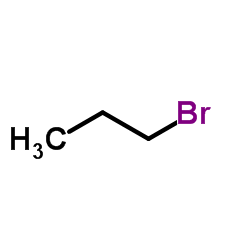
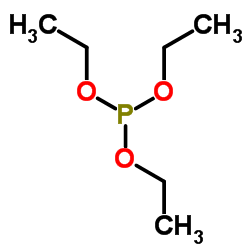

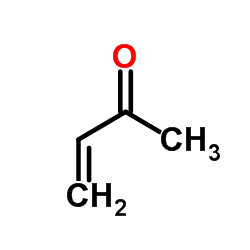


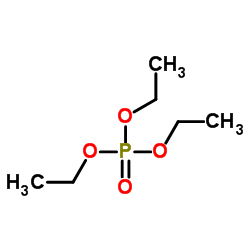


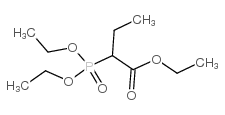
![1-[chloro(ethoxy)phosphoryl]propane结构式](https://image.chemsrc.com/caspic/181/28830-00-4.png)
![1-[ethoxy(propyl)phosphoryl]oxy-4-nitrobenzene结构式](https://image.chemsrc.com/caspic/083/3015-73-4.png)

![1-[ethoxy(2-ethylsulfanylethylsulfanyl)phosphoryl]propane结构式](https://image.chemsrc.com/caspic/154/50728-08-0.png)
